By Dr. Craig D. Reid
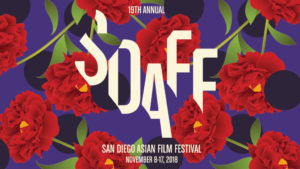
It’s that time of year again in San Diego, Fall, and if you’re a major fan of Asian films like me, then you’ll be chomping at the bit and ready to be surrounded my more bees that have discovered a city-sized flower garden full of peonies. These bees aren’t bugging you but alarming you to the eclectic, electric and eccentric buzz of Asian films that will sting, mesmerize and amaze you at the 19th Annual San Diego Asian Film Festival (SDAFF), which takes off, flies and lands within a whopping 10 day from November 8-17 in San Diego, California.
With SDAFF 2018’s program of 160+ films, from 20+ countries in 6 venues around the city, it not only features movies from some of the some of the biggest names in Asian films today, but they are also serving up oodles and noodles of must see films you might not know exists, yet prior to the festival they’ve already been earning millions worldwide, winning awards in their countries of origin and blowing away the minds of other film festivals including Cannes. Films full of twists mental disparity, spiritual clarity and eye-popping insanity.
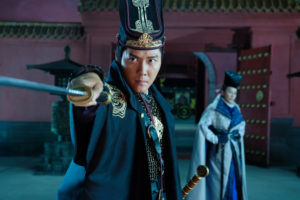
Yet film is a visual medium…thus what about visual clarity? That comes from smartly sitting in the right place of the movie theater that gives maximum visual pleasure. And where is that? On the right hand side of the theater because you want most of the visual imagery to enter your left eye, which then crosses over the right side of the brain, where all the visual processing takes place. This means one needs to get to the screenings of movies like Detective Dee: The Four Heavenly Kings and the mind-bending Cannes sweetheart of a film Long Days Journey into Night before unwitting fans that don’t know this secret get the best seats.
I digress, my excitement is getting the best of me…calm down Craig…let’s get to the core and organizer of the festival, the Pacific Arts Movement (aka Pac-Arts; formerly the San Diego Asian Film Foundation). What makes SDAFF one of the country’s premier film festivals is the unbriddled passion and unrequited dedication of Pac-Arts’ executive director Kent Lee and artistic director Brian Hu, the steadfast board of directors, a devoted staff of workers and the hundreds of hard-working volunteers and interns that have entered the hallowed hallways and festival family over the past 19 years.
The festival’s more than a collection of Asian-themed films, it’s a social phenomenon geared toward giving non-Asians a better-rounded taste of Asian filmmaking. The festival has become a local symbol of unity, a way to bring together San Diego and southern California’s many different Asian American communities, who don’t always see themselves as a single entity compared to African American and Hispanic communities.
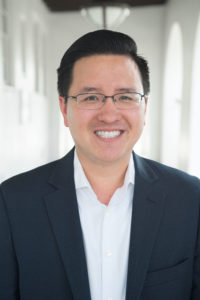
Now in his third year as executive director, I recently sat down with the first generation Chinese-American, Kent Lee, and asked him about the growth of Pac-Arts growth since the Pac-Arts and SDAFF founder Lee Ann Kim retired and how does SDAFF address current issues that affect Asian American communities.
Lee grins and nods, “The organization is always evolving and the team we have today is different from when I started and I’m certainly a big change from Lee Ann. Couple of ways to look at it. One of our initial goals was to insure to continue the work that had been put in place by Lee Ann and that the festival would remain an important part where we could present Asian and American Asian films to gather people and provide the representation of the Asian American community and we continue doing that.
“I’m not going to say that we’re successful yet. If the festival last 50 or 100 years, there will always have an evolution and we always have work to do to keep it moving forward. (I smile saying, “I’ll ask again about this, then.”). This year’s Spring and Fall Festivals had been bigger and we want to continue that moment. I want the Pac-arts movement to be sustainable for the future. It’s not just about being able to put on these programs, continue to bear audiences and bring together new resources and supporters. Funding is also one of those elements. If an organization can’t be sustainable funding-wise, at some point you’ve got to have the resources to do what you want to do and I think to that end we still have a lot of work to do. So I haven’t reached my goals yet.”
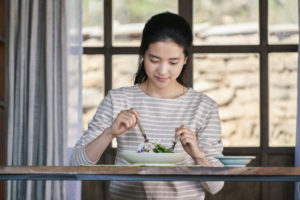
Lee shares that in regard to this year’s SDAFF Opening (Little Forest) and Closing (Ramen Shop) Night films, one of the important new elements that Pac-Arts’ is doing is working toward connecting with communities not just through film but in some cases, specifically through food. These films have themes of how individual connect with families through food. So how will they introduce food as a gimmick?
Lee explains, “We’re calling it film-to-table events, where after the audience watches the film, we’ll take dishes from the film and put them on the table. So for the Opening film, we’ll have a number of Korean dishes, not just from a restaurant, but dishes made by the grandmother or matriarch of the family and this family will have the dishes as seen on the film. Closing Night is touching upon a number of Singaporean dishes and we’re looking for a partner to do representations of those dishes so you can see them in real life. It helps people connect to both of these experiences and not just to what they see on screen.”
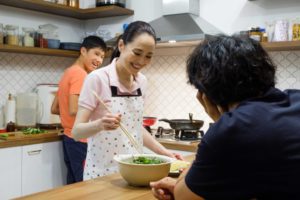
As it turns out these ideas are precursors as they look forward for next year…SDAFF’s 20th Anniversary, where Pac-Arts is planning to do a series of events in neighborhoods that have Asian American roots in San Diego and capture stories from their neighborhoods in several different ways. Listen up folks here comes an opportunity to perhaps make a film for Pac-Arts.
Lee enthusiastically revels, “One of those ways is through film where we’ll bring together local food and restaurant partners that could share something from the culinary side and then we can commission filmmakers to help shoot a short documentary on their choice of topic that could capture life in our local San Diego neighborhoods. It’s all about taking the opportunity to reflect upon the audiences that help support what we do and a large part of doing something like that is not just to present film, but how we use food to bring people together and that can also connect them with film. Apart from films, people are coming together as part of a social gathering and social experience.”
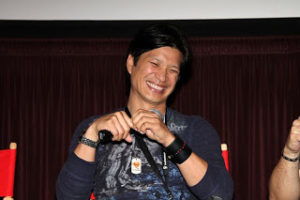
Makes total sense when you consider food is one of those things that brings people together, is a great pick me up when you’re feeling emotionally spent, and over the past century has become an integral starting point for intercultural exchanges on a level everyone can understand and associate with. As today’s global mindset grows beyond every country’s borders, where the only word that’s worldwide known and used with the same meaning in every language, okay, food is the other universal language that every country and communities have access to.
In closing Lee reflects, “When I first applied to this job, a conversation I had with Lee Ann was when I told here I have zero film and artistic background, she said, ‘Neither did I.’ When she first started, it wasn’t because she was an expert, she just believed there was a reason for this to exist and that’s what drove her work. So these days for me, my role isn’t to select films. We all trust Brian and the volunteer teams and people he trusts and consults with. My job is to build and provide the resources to do it, connect us with people who will fund it, people who will help us raise money to help fly out filmmakers, not just locally but from around the world.
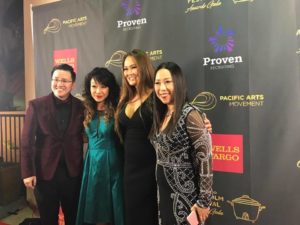
“I’m a storyteller and I have to translate what we’re doing into stories. I’m surprised sometimes on how much work we have to do. I spoke with a partner who’s supported us on and off throughout the years, and shared with him that the purpose of our organization goes beyond the festival. Our mission’s not just presenting films but do it in a way to help inspire more compassion in our world. I also spoke about our youth programs. He thought we’re just a festival that was held once a year. People are seeing that we’re not just here for entertainment, we’re trying to build a greater understanding between communities and people…and that could be through cultural communities, food, and San Diego as a whole. We believe that what we’re presenting can help enrich people in general.”